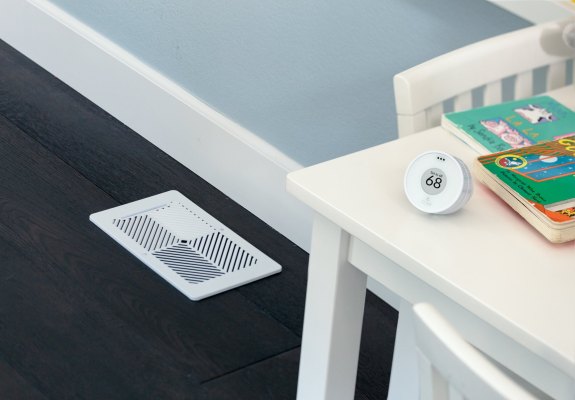When it comes to consumer-facing climate tech, electric vehicles and solar panels may get all the attention, but every home has some even lower-hanging fruit — HVAC, or heating, ventilation and air conditioning.
Residential and commercial buildings produce about a third of the carbon emissions in the U.S., and much of that comes from heating and cooling. Large companies often employ HVAC consultants to optimize their systems, something most homeowners won’t pony up for.
That’s where Flair comes in. The startup offers smart vents and thermostats that can balance heating and cooling across a home, potentially slashing energy use.
Yesterday, the company announced a $7.6 million Series A that was co-led by Active Impact Investments and Lowercarbon Capital. Existing investors SOSV, Skyview and Resilience Capital Partners also participated, and they were joined by new investors Shell Ventures, Susquehanna Foundation, and 3M Ventures.
“This investment represents a clear conviction about the urgency of reducing the impact of buildings and is a recognition of the criticality of both software and hardware solutions needed to transition to a clean energy future,” Flair CEO Dan Myers said.
Flair’s Smart Vents are paired with a temperature sensor (known as a Puck), and the vents open and close depending on whether the room has reached the desired set point.
That may not seem like a big deal, but many homes have just one thermostat that controls the whole system, leaving some rooms to be over- or underserved by the HVAC system. By tuning the system, Flair hopes to improve homeowner comfort while also reducing energy use. Rooms can have independent set points, and Flair’s software can also target only occupied rooms.
TechCrunch’s Darrell Etherington reviewed Flair’s Smart Vent system and found that it significantly improved the temperature consistency throughout his nearly 100-year-old home. The company’s vents and sensors can tie in with existing smart thermostats from ecobee and Honeywell.
Flair said the new investment will help it build its distribution network and bolster its relationships with utilities, which also sell its products through energy-efficiency programs.
The company is also targeting deeper integration with heat pump systems, which are set for mass adoption after becoming eligible for significant tax credits under the recently passed Inflation Reduction Act. Already, newer homes built to the Passive House standard (or close to it) are heated and cooled by just one or two minisplits, and room temperatures are balanced using a separate set of ducts connected to a heat-recovery ventilator (which also circulates fresh air). The combination of minisplits and HRVs obviates the need for traditional registers, so Flair’s focus on heat pump integration should future-proof the company somewhat.
As a current heat pump owner, I’m intrigued by the idea of a smart thermostat that’s ready for minisplits. Many minisplits require proprietary wireless thermostats, and smart thermostats require wired connections. Linking the two can be done, but it’s not necessarily easy.
Flair’s Puck thermostats are designed to work with any minisplit system, and if someone has trouble pairing them, the company says it will do it for them.
“All over the world, people are trying to get their hands on heat pumps, the cheapest and cleanest way to cool homes,” said Chris Sacca, Lowercarbon co-founder and managing partner. “Flair turns all these machines into smart devices that save your bill and the grid.”
